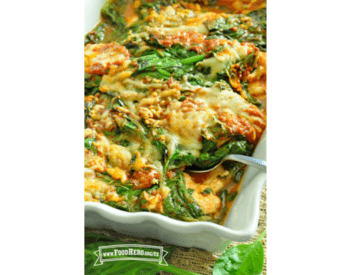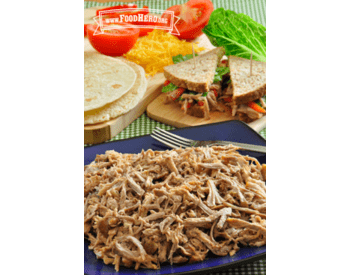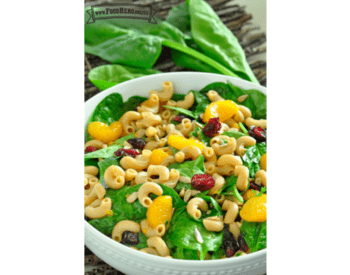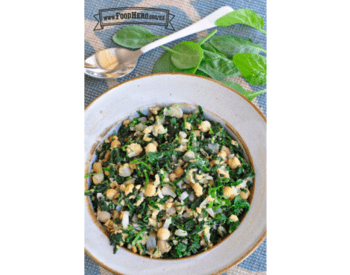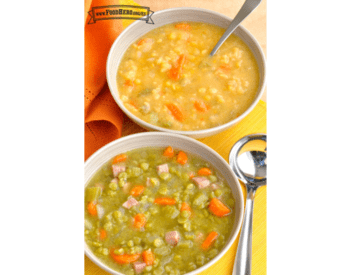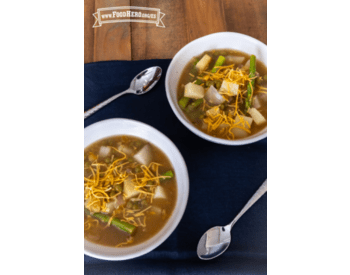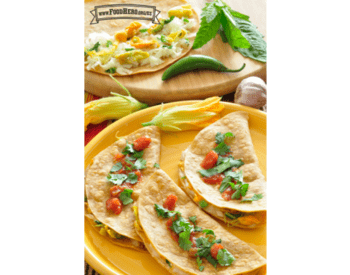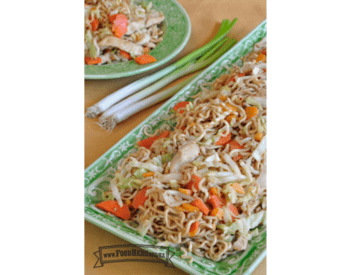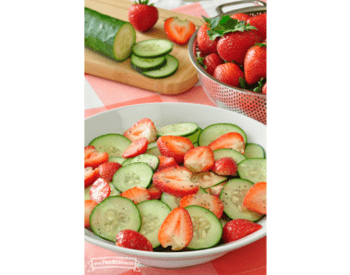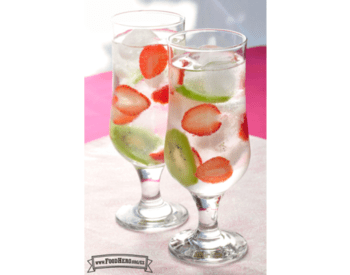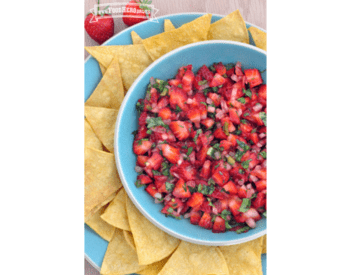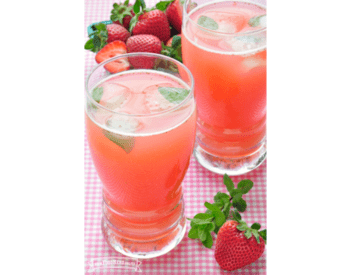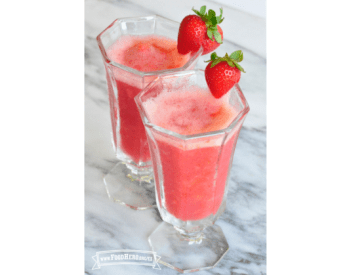Transcript
From the Oregon State University's Extension Service, you are listening to In the Woods with the Forestry and Natural Resources Program. This podcast aims to show the voices of researchers, land managers, and members of the public interested in telling the story how woodlands provide more than just trees. They provide interconnectedness that is essential to your daily life. Stick around to discover a new topic related to forests on each episode.
Welcome back to another episode of In the Woods. I'm your host, Lauren Grand, Associate Professor of practice and extension agent in Oregon State University's College of Forestry.
On today's podcast, I've got the amazing Tiffany Hopkins with me today, and Tiffany works in our OSU extension forestry program and she has a specialty in non-timber forest products. Welcome to the podcast, Tiffany. Hi. Thanks for having me. So, Tiffany, tell us a little bit about yourself and how you got interested in non-timber forest products.
Sure. Um, yeah, I was born and raised in Oregon just at the base of Mount Hood and spent as much as my childhood as possible outside in our woods. Um, and so that kind of just naturally lended me to going to Oregon State, and I got a bachelor's degree from there in natural resources with an emphasis in community outreach education.
So it was there that I learned about OSU extension and fell in love with everything that is extension, and, and then found out that to be in extension I would need a master's degree, which was not part of my plan. So, uh, I started trying to figure out how to do that because I basically was like, I will do whatever I need to do to get to extension.
And so I found a program in West Virginia, uh, working under an extension agent. So it was this really amazing program. I got a lot of really good hands on experience, including, um, teaching a Shiitake workshop over there. And so that's kind of like so funny, but that one workshop, then when I came back here, um, I was asked to teach at Tree School and I was like oh my gosh, I haven't, I don't, what, what do I teach?
And so I said, this is what I have experience teaching in. And they were like, yeah, do that. And so I did. Um, and every single year at Tree School, that class has filled up. Overfilled, had a full wait list. I, I started teaching two. And both of those fill up and have a wait list, and whatever.
So just like that kind of is where it all sparked from. And I just have a passion about a little bit of a different side of non-timber forest products that hopefully we'll talk about, but I'm just super creative and I like making things, and so that also really lends itself well to the non-timber forest products realm.
Yeah, I always get, um, so excited when I talk to you about non-timber forest products because it is so creative and it makes me think of, you know, usually you think of non-timber forest products as a, you know, how can I develop income? Or, um, how can I sell something that's another product from the woods than than trees?
But when I talk to you about it, it's often about how to make something really cool or eat something or do something like that from, from another product and that you could also potentially sell or just have fun and so. Yeah, yeah, and there's definitely a big part of NTFPs that are what you're talking about, income generating.
But for me, in my role with NTFPs, I, my number one goal in my job is to serve the people that are my landowners, as I call them. Um, and I got so much feedback that it was less about making money for these small woodland owners and more about engaging with their property. So people were just describing that if you harvest trees, there's, you know, 60 years that go in between the harvest of trees, like a major harvest or, you know, 20, 30 years in between different events that you're having.
If you, if you are harvesting trees. If you are not, then there isn't even that interaction with your woods, and so people are hungry for this engaging with their woods in an active way and, and not as interested or needing that additional income. There's a huge group of people who are interested in that. It just felt a lot less for me, like that was where the interest laid with the people who I work with on a, on a regular basis.
Yeah, great. Welcome opportunity to fill a needed niche or in the, in the, um, the subject. So, let's start, let's start off by talking a little bit more about what non-timber forest products you typically work with the most. Yeah, okay. So like I mentioned, a big one is Shiitakes, that's a really popular topic workshop.
I think just like forest edibles are really big topic, um, people always ask me like, what about this mushroom? What about this mushroom? And I'm like, this is just a small part of what I do. There could be somebody who just did mushrooms and how to grow and harvest and identify mushrooms. So I've, I've stuck with, I have stuck with Shiitake, but then, cuz there's all these other topics that are super fun and interesting.
So big leaf maple syrup has been really fun. That's also something that I was introduced to on the East Coast. Obviously not big leaf. Um, but here our, our maple is the big leaf, and so making maple syrup out of that, that's been a really cool one to dive into. And then greenery, I think is probably the, the largest, um, NTFP that I, I work with and work with landowners with.
And then also that kind of what I mentioned earlier too, like this idea of forest crafting and forest crafts. Um, which is not a typical NTFP, and I think some people wouldn't consider it an NTFP, but I think when you look at it, technically it's a non timber product that comes from the woods. So, I count it.
I do too.
Why not? Um, okay. Well since greenery's one of the bigger ones, uh, can you tell us a little bit more about greenery and how you work with that? Yeah, so greenery is exciting to me because it's like the most basic resource. If you own woodlands, you have greenery of some sort. And so it's accessible to everyone that I work with.
The species is gonna differ. What you do at that species is gonna differ. Um, but just in general. You're gonna have it and so we can work with that. So specifically, I think the exciting time with greenery is around the holidays. Um, so people will make wreaths and garlands and center pieces. I guess wreaths and garlands are a little more specific in my mind to the holidays and then center pieces, you can make those more specific to the holidays.
Um, but that's really exciting. It's a, it's a way to bring the woods into your home or to display in some way a wreath on your door or in your home, in a garland in your home. And I think that's something really special. Um, we love, as woodland owners, we love our woods and to be able to bring a piece of that in to enjoy even when we're inside is, is special.
And so, yeah, I've hosted tons, tons and tons of wreath workshops and that's a really fun and popular one. And it's funny because it's such a basic concept. Once you get into it, it's pretty easy. But I had never made a wreath before, um, before getting into NTFPs. Um, so and then move that to garlands and they're even a little more simple.
And then for centerpieces, that's probably like the most exciting one, and I will just incorporate something like that into different workshops. Like if you're doing tree ID and you're, you're cutting some samples or something anyways, then you can just kind of like put them in a, a base and have this beautiful thing to display.
And something that I've talked about a lot, maybe specifically with one of the groups I coordinate, the Women Owning Woodlands Network is like being a woodland owner separates you oftentimes from your friends, from your family, whatever, but it, it like makes you who you are. And so to be able to share that like if you're going to a dinner or something by bringing this centerpiece.
Or just this arrangement that you've made from greenery, from your property, that's like a piece of who you are that you're sharing with, with these other people that you love and, and I think that's really cool and unique and special.
And I think that's kind of more where my mind goes to with NTFPs than, than the monetary value that they can bring to landowners. So those are kind of like the more common uses for greenery, I guess. And then some of the other things that I've worked with is making smudge sticks, which is like such a thing right now.
Um, so you can make these little bundles of different types of greenery and, and it's said that if you, if you burn those, in your house or as part of this kind of ritual, that it can help kind of cleanse the air in your home. And maybe you look at that a little bit more scientifically and it's like air purifying or something, but oftentimes it's a little bit more of a spiritual thing.
Um, which I think a lot of woodland owners connect with because that's something that a lot of people feel when they're out in their woods, is this more spiritual connection in some way. And so taking a piece of that and using it in your home to clear out some of the energy or something in your home is kind of a cool concept and a little bit more unique and a little more out there.
Um, but that's something that I've done before too. Um, and it's fun 'cause you can pair different, different species and, and then you just dry them and kind of make this bundle out of them. And then also, essential oils are a big one and there are some people that are doing that in Oregon. Um, and then also newly that I've kind of gotten into and been super excited about is making tea out of different species.
And so, um, like for instance, the Douglas fir, you take the needles and you can make an herbal tea out of it. And so that's also a use for, for greenery.
Yeah, those are, those are some really special things. Um, I remember my father being really excited when he read about Spruce Tips being used in restaurants because of my connection to forestry.
And he was like, oh, we're eating the trees and it makes it a fancy plate and they can charge a hundred more dollars for dinner or whatever, 'cause they have spruce tips. He says, do you live near spruce tips? Can we get the spruce tips too? That's awesome. So it's, but uh, it just, that just reminded me of my dad he's so silly.
But, um, yeah, no, that's so great to find fun ways to, to incorporate the trees that we live around. And I love that concept of, you know, bringing, you know, your attachment to the woods and bringing it with you. You know, I teach all these native tree classes and now I have... that's such a good idea. I'm going to create a bouquet of the clippings and put them in a vase or a centerpiece, that's, that's wonderful. Um, I never thought about it before.
Okay, well, yeah, that's great. Learning, learning so many things. Um, okay. Well what about kids? Do you do, um, non-timber forest product activities, uh, with kids? Yeah, this is something that comes up a lot with small woodland owners too, and where I felt like there was a little bit of a niche, um, this like generational gap or trying to figure out ways to get your kids or grandkids involved in your forest property seems to be difficult for people.
Um, it's something that we hear about constantly and so I started thinking about it doing some of these non timber forest product things. I was like, this is the perfect way to include young kids in your, in your forest property or even old kids.
Um, for instance, like the big leaf maple syrup, if you tap a big leaf and sap starts coming out, you don't have to do anything to it after that. You can drink it straight outta the tree. And it's the coolest thing as a grown adult, one of the coolest things I've ever done, just 'cause it's exciting, like you're getting to drink the sap of this tree. I don't know. There's something about it that's magical and so cool.
And I can just envision a little kid doing something like that with their grandma or grandpa or whatever and, and having that memory and something that we talk about is like, it's all about the memories.
If those grandkids have memories of drinking maple sap from a tree, they're more connected to that property. They're more connected to you, and they're going to want to honor you in continuing on your legacy with that property.
Um, if they went out with their grandma or grandpa did little clippings and made something cool that they could take back to their, you know, their room or give to their mom, or, you know, something like that, that's, it's all about creating memories.
And so that's always something that I also talk about is like, think about how you could work with other generations in, in including them in some sort of non-timber forest product project.
Um, things like doing leaf prints with younger kids, so like going out and collecting leaves and if they're a little bit older, I mean, even my three year old, he asks me what kind of leaf is this? And so we're already identifying leaf types, so I, you know, I'll tell him like, that's a big leaf maple. And he repeats it to me.
And, and so if you have three or old or or above, I guess you can start doing identification projects. So it's not just about like making this project, but it's a fun way of starting to educate kids about, about what is out there and being able to name different species and so do some leaf collecting, do some tree ID and then come in and paint the leaves and make prints out of them.
And then even then you could like label them and so they could have that as something that, you know, little kids just love hanging up their art projects or something like that. Mm-hmm. Um, and another really fun one that is always a big hit that I was like super nervous about, and, again, some people would not consider this a NTFP I guess, but is nature journaling.
And so sometimes we'll, collect different little specimens and add them to our nature journal. Sometimes that just looks like photography and adding that to our nature journal. Um, but something that I always talk about with that is like being able to include that in your management plan because it's such a personal, your personal experience with the woods.
So, people know what you were thinking, what you were feeling, what you were experiencing when you were out with your woods. And that can help them understand what you dream of for your woods when, when maybe you're gone or something. But being able to include kids in that way I think is a super fun idea. And, and another one that I love is like wood burning.
So for like older kids, but it's called pyrography, I can never say it right. Um, but yeah, it's just, you know, if you have a spare wood cookie or something and you can draw names. I know one landowner does this. He uses wood cookies and then they burn into the wood cookie, like with their grandkids the name of a trail, and it's almost like a rite of passage or something.
So they get to, um, burn into this wood cookie, whatever they've chosen as the name for this trail on the property. And that becomes like their trail. And so something like, that's really cool, but you can do smaller wood cookies and make little things. But yeah, I think that that's also something where I look at NTFPs from a different direction.
It's just always about what do I feel like my landowners are needing and wanting out of NTFPs? And that felt like a natural connection. So it's something that I've kind of focused on if I'm incorporating a non-timber forest project or product into any event I try to mention or bring up, like, this would be a great way to include grandkids doing this kind of project or your, or your kids. And so that feels special to me.
Yeah, those are so great. I especially love those stories about building excitement and sharing those memories about with, you know, with through the generations of families because, you know, those kids feel more attached to it. They wanna keep those lands, keep those forests forests, and keep them healthy and conserved with what we all want for our forest in, in Oregon.
So that's so that's so amazing and I have to share. I love, um, I have to share our project that I did with kids once that I always thought was fun. We called it, um, I learned it from a friend of mine and we called it painting with the forest. And you collect a bunch of leaves and various sticks and, you know, from all different types of plants.
And then you would collage them into a scene, um, of, you know, of whatever you wanted. But it was made out of all forest. You know, you'd glue them to a piece of paper and you could color or paint around them. And it was all made out of, um, different things that you'd collected. And there was always a lot of spiders involved.
Always. But it was always a lot of fun. Yeah, I, um, you should Google that. I don't know how you exactly Google it, but there's some insane artwork that's made out of like little pine cone bracts and all kinds of things. And I, I've definitely done that with WOWnet before like. Collect what you want and make little, little sceneries out of it.
And yeah, it's cool cause I'll even pick up trash. I'm always picking up trash in the woods. Yeah. So I'll pick up trash and I'll incorporate that some way into my little collage thing. So yeah, I love that. And I could see kids thinking that was so cool. That is. Yeah, that's cool. And with the trash, it's a statement, then it becomes a statement piece.
Mm-hmm. Great. Oh yeah, so lots of new ideas. That's so amazing. Um, okay, and then, um, you mentioned teas, uh, earlier that you do some things with tea. Tell us a little bit more about, is, do you have anything more to share about teas? I know you mentioned talking about Douglas fir and, uh, needles, but is there other things that you do?
Yeah, so one of another kind of niche that I tried to fill was, um, getting this information out to people in a way that felt realistic. Instead of offering specifically workshops around this stuff that are only available to someone who's in that part of the state or whatever. I, anyways, I started making, um, YouTube videos, so, sometimes they're relatively short, and so that makes more sense to offer it in the format of a, of a YouTube video accessible to everyone.
But I started learning more about these teas that you could make. So, in the YouTube videos, so far I've done a blackberry leaf tea, um, a Douglas fir tea, and then a Hawthorn tea. So, those, the Doug fir and Hawthorn, they haven't been published yet. They're scheduled to publish. Um, but the blackberry leaf tea is what really got me excited.
'Cause I was like, this is something that everyone hates and here we have this way to utilize it and make something medicinal from it that we can enjoy. And it was so cool. I like, again, with like drinking the sap, I was so excited making this tea. And it's like I went out and foraged for this plant, then I brought it in, dried it, did the whole thing, and then brewed it.
And it made me this cup of tea. And I just felt like so empowered by that. And so I got really excited and I started really diving more into these medicinal teas. And each species has something different to offer. Um, so blackberry specifically can help with like digestional things. Um, and I thought that that, I don't know, something about that has been super exciting to me and just kind of like mind blowing that I didn't know about this stuff before.
So, yeah. That's so cool. I'm so excited to watch these videos of yours. Um, they're always really good and so I'm really excited to watch this tea thing, especially Blackberry because that... yeah, sounds good. And who doesn't wanna have a good tummy, right? Yeah, yeah, yeah. Yeah, I wouldn't say that it's like the best in flavor.
It's not bad, but you know, like some teas are really yummy, like peppermint or fruity or something like that. And it's a little bit more like bland, but still just like the whole process was really cool. And that one, that one is live, so you can watch that one. The other two just haven't, haven't went live yet, but, but yeah.
Well, maybe you throw a couple berries in there to spruce up the taste. Yeah, true, true. Some lemon, some, honey. Yeah. Cool. Okay, well, um, do you have any advice for those of us listening or, um, well, I guess there's only the people listening, right? Uh, who might be interested in getting into non-timber forest products that don't know where to start.
Yeah, definitely. That's a big question that I get is like, I wanna do something, I just don't know what. So, my advice would be to kind of do an inventory on a bunch of different levels. The first being, what are you interested in? So, is it like medicinals? Is it essential oils? Is it the greenery stuff? Um, and, and maybe even a step before that.
Is your goal that you do want to make money, or is it more that you want to find these fun and unique ways to engage with your property? Um, cuz that will take you on a different path depending which of those you're more interested in. And it could be that you know, to start off with, you'd like to just dive into it on a personal level, and then maybe your interests and your knowledge grow and you're like, hey, maybe there is potential to make some money off of this.
But yeah, so I'd start there and then what are you interested in, what excites you? And then what do you have already on your property? So, what species do you have? What equipment do you have? What are the things that you're gonna need? Um, and then just really going from there.
Okay, great. And then, so you mentioned, you know, we refer to a lot about your own property, but let's say we have some listeners who, um, maybe don't own property.
Is there a way for them to collect some of these things, um, on public land? Yeah, great question. Yes. Um, for some things there are ways that you can get permits. And, um, Lauren, you mentioned that you leave links for the, the different podcast episodes. And so I think it would be great to include a link, um, to like a, a local office where they can get those permits.
So usually the permit just says you can collect X amount of a certain species, um, and it'll help educate you on how to do that sustainably so that you're not harming the, the ecosystem. Or the, or just the specific species, I guess, too. Right, and usually you can contact your local ODF office or your local, um, BLM or forest service office and find out if they offer non-timber forest products permits, and we'll, yeah, we'll include links to that information as well.
Okay, well, anything else that you wanna add before we do our lightning round. No, I think we, we covered it. That was, that was really fun. I, I think that if, if somebody listening is, is wanting to get involved in non-timber forest products, I think just go for it. Like, try something out and, and if you don't like it, then try something different.
Oh, oh, I know what I should mention. Um, you ask this in the lightning round I think, so I'll mention it then. Okay. Okay, great. Well, with that, let's, uh, don't leave us yet. We're gonna have our lightning round next.
So, Tiffany, what's your favorite tree? My favorite tree is, uh, Doug fir. I think there's something about Oregon rain and the smell of the woods and all the Doug firs that I just love. It is a beautiful tree. It's unbelievable the feeling that you have around them when they're, they're so large. Um, okay.
What is the most interesting thing that you bring into the field with you, whether it's, uh, in a field kit or, um, in your cruiser vest or other carrying device? Um, I think something that I've been using a lot lately is, well, I mean, lame answer, my cell phone, but specifically the app. There's an app that I, I've had, um, but I, I just for some reason started using it a lot more called Picture This and so it's an ID app and that, it's just really helpful to me 'cause I, I'm not good at identifying trees and plants and, and memorization just isn't the way that my brain works really well.
And so to have that and to be able to feel like empowered to, to check, to see if what I'm thinking is accurate or to learn something new, I just really appreciate that. So that's my new latest like I'm always, I'm always taking that out and being like, oh, cool it's, it's this species, and I like that.
Yeah, I haven't tried that one yet, I'll have to, I'll have to get, what's it called again? Picture This. Picture this. Okay. I'll have to try it out. Okay. And then, um, do you have any resources to share with us for other people or for listeners who are interested in, um, diving a little bit deeper into maybe the crafting world of non-timber forest products?
Yeah, as far as resources for non-timber forest products, my number one go-to would be the non-timber forest products, um, Know Your Forest Learning library page. So, if you're interested in more of the monetary side of things, there's resources there for you, but if you're not, there's also resources there for you.
So that's a great place to start. And then the Tree School online videos are really cool because they go into some different topics, like there's some truffle videos on there. There is my Shiitake workshop, it's from start to finish, it's on there. So there's some different resources that it's nice to be able to engage via videos.
I guess I should also say my YouTube videos, I feel like are hopefully a really helpful resource for people. And then also on the monetary side of things, or just to find a community of people who are also interested in non-timber forest products is the Oregon, um, Woodlands co-op. That's a really cool group that you can join and, and they kind of band together to, to sell some of these things.
Yeah, and we actually interviewed, um, one of the gentlemen from the co-op, um, so look back to episode eight, I think it is. It's called Non-Timber Forest Products if you're interested in some interesting different ways to maybe make some money in the woods. Yeah. But yeah, those are some great resources.
We'll make sure to have the links on our website so people don't have to scrounge to try to write 'em down when you're listening. Especially 'cause I often listen to podcasts while I'm driving. That could be unsafe. So, go back to our website @inthewoods podcast.org and we'll have those websites for you.
Well, thank you so much for joining me today, Tiffany. It was so great to talk to you, and I've got all sorts of great ideas now about different projects I can try in the woods, and I'm so excited to feel like I'm not just throwing those tree samples in the compost. I can turn them into a second use. So, um, anyway, that concludes our episode on crafting with Non-Timber Forest Products.
Thank you so much for listening. Uh, join us again in a couple weeks to explore another episode on Oregon's amazing forests. Until then, what's in your woods?
Thank you so much for listening. Show notes with links mentioned on each episode are available on our website inthewoodspodcast.com. We would love to hear from you, visit the tell us what you think tab on our website to leave us a comment, suggest just a guest or topic, or ask a question that can be featured in a future episode. And, also, give us your feedback by filling out our survey.
In the Woods was created by Lauren Grand, Jacob Putney, Carrie Berger, Jason O'Brien and Stephen Fitzgerald, who are all members of the Oregon State University Forestry and Natural Resources Extension team. Episodes are edited and produced by Kellan Soriano. Music for In the Woods was composed by Jeffrey Hino and graphic design was created by Christina Friehauf.
We hope you enjoyed the episode and we can't wait to talk to you again next month, until then what's in your woods?
In this episode, Lauren Grand is joined by Tiffany Hopkins to discuss how making non-timber forest product crafts can help people feel more connected with their local environment.

